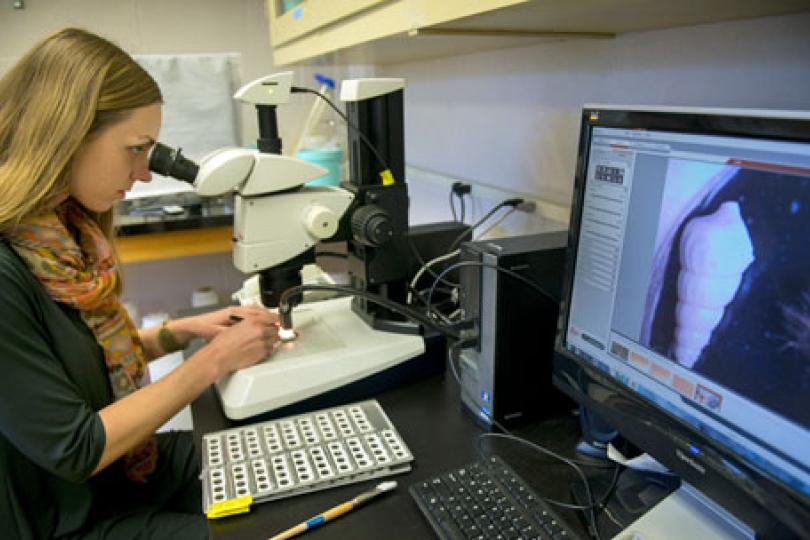Recovery from Ocean Warming Can Take Thousands of Years
Editor's note: The following story and video first appeared on the UC Davis website. Be sure to scroll to the bottom of the story to watch an excellent video about Sarah and her research.
Ocean ecosystems that experience rapid upheaval because of climate change can take thousands of years to recover, according to an examination of fossilized ocean fauna on the seafloor by the University of California, Davis.
The study, published online March 30 in the Early Edition of the journal PNAS, is the first record of disturbance and recovery of seafloor ecosystem biodiversity in response to abrupt climate change.
The work, led by Sarah Moffitt, a scientist from UC Davis Bodega Marine Laboratory and Coastal and Marine Sciences Institute, shows that while climate change and the deoxygenation of seawater can alter ocean ecology very quickly, recovery can be on a 1,000-year scale, not the 100-year scale previously thought.
Moffitt analyzed more than 5,400 invertebrate fossils, from sea urchins to clams, within a sediment core from offshore Santa Barbara. The core, essentially a tube of sediment that covers a period between 3,400 and 16,100 years ago, provides a before-and-after snapshot of what happened during the last major deglaciation.
The deglaciation was a time of abrupt climate warming, melting polar ice caps, and expansion of low oxygen zones in the ocean. This new study documents how long it took for recovery of ecosystems to begin, after a dramatic episode of climate change.
‘I cut it up like a cake’
Previous studies reconstructing Earth’s climatic history through marine sediments primarily relied upon single-celled organisms called foraminifera, and less so multicellular life, like invertebrates. Moffitt, whose background is in marine ecology, wondered what the invertebrate fossils within the sediments could tell her about the structure of the ocean ecosystem during past periods of climate change.
“After the initial sampling at sea, I took the entire core, which was about 30 feet long,” Moffitt said. “I cut it up like a cake, and I sampled the whole thing. Because of that, I had the whole record.”
The history lesson told by the sediment core is one of initially abundant, diverse and well-oxygenated seafloor ecosystems, then a period of warming and oxygen loss in the oceans, followed by a rapid loss of diversity. The fossils nearly disappeared from the record during those times of low oxygen.
The study found that oceanic oxygen levels fell by between 0.5 and 1.5 mL/L over a period of less than 100 years, showing that relatively minor changes in oxygen levels could result in dramatic changes and reorganizations for seafloor communities.
‘Gritty reality’
The results suggest that future global climate change may result in similar ecosystem-level effects with millennial-scale recovery periods.
“These past events show us how sensitive ecosystems are to changes in Earth’s climate — it commits us to thousands of years of recovery,” Moffitt said. “It shows us what we’re doing now is a long-term shift — there’s not a recovery we have to look forward to in my lifetime or my grandchildren's lifetime. It’s a gritty reality we need to face as scientists and people who care about the natural world and who make decisions about the natural world.”
The study’s co-authors include UC Davis professor Tessa Hill from the Department of Earth and Planetary Sciences and Bodega Marine Laboratory, Peter Roopnarine, curator of Invertebrate Zoology and Geology from the California Academy of Sciences, and professor James Kennett from UC Santa Barbara Department of Earth Science.
The research was funded by the National Science Foundation, as well as the UC Multicampus Research Programs and Initiatives, UC Davis REACH IGERT, Mia Tegner Historical Ecology Grant, the EPA STAR Fellowship, and Switzer Environmental Fellowship.
Additional Resources
Read the study (no subscription required)

